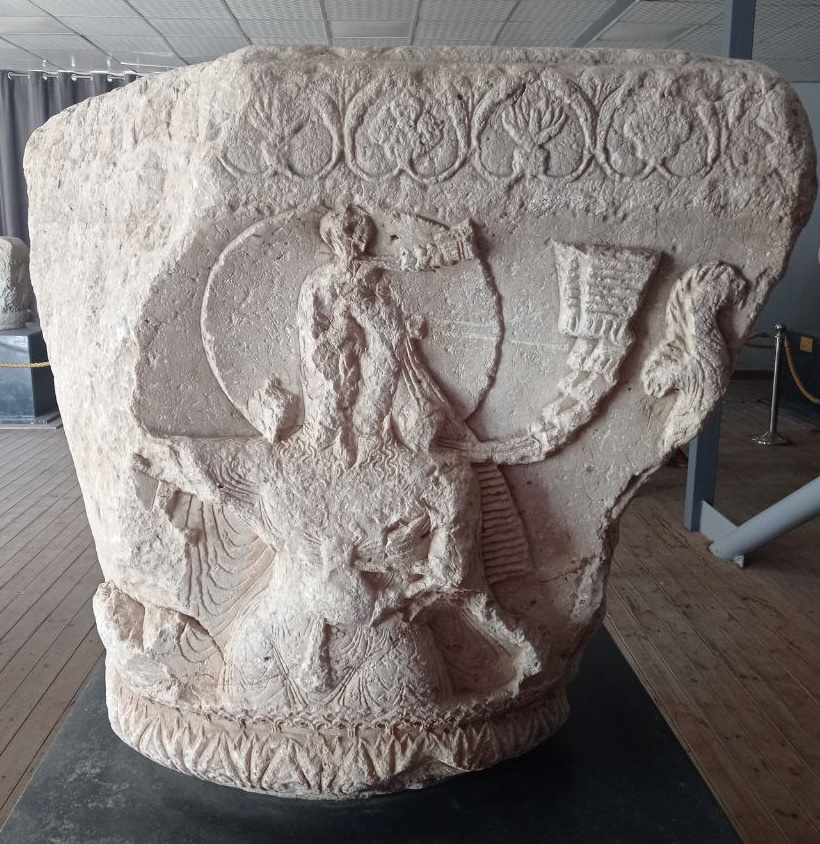Thread: "In the beginning, Agni burned all things, but at the insistence of Shiva, Brahma withdrew Agni, and instead created Yama, the god of death" from: "Encyclopaedia of the Hindu World, Volume 1" By Gaṅgā Rām Garg... 



Very interesting...Because of this: Nergal, the Mesopotamian god of death, who "represented the high summer sun which scorched the earth...which hindered crop production"...
oldeuropeanculture.blogspot.com/2021/05/winged…
oldeuropeanculture.blogspot.com/2021/05/winged…

In Mesopotamia, Nergal is associated with lions (is actually depicted as a lion). Why? Because in Mesopotamia, Jul/Aug, Leo, is the hottest and driest part of the year. The time of drought. The time of death... 



Why Leo? Cause the end of Jul, beginning of Aug marks the beginning of the Eurasian lions main mating season... 



But in Indian subcontinent, Leo is the peak of Monsoon season...The wettest time of the year...
The climate in Leo in India is the opposite to the climate in Leo in Mesopotamia...Which is why lion is a negative symbol in Mesopotamia and a positive symbol in India...
The climate in Leo in India is the opposite to the climate in Leo in Mesopotamia...Which is why lion is a negative symbol in Mesopotamia and a positive symbol in India...

So when is the hottest and driest time of the year in India? As you can see on the previous chart, the temperatures start rising during Jan/Feb, beginning of spring, and peak during Apr/May, the end of spring...This is also when we have minimum precipitation...
So the hot/dry season in India is spring, symbolised by ram...I talked about the animal symbols of the seasons in this article oldeuropeanculture.blogspot.com/2019/10/symbol… 

And the hottest/driest time of the hot and dry season, the time of drought, the time of death, is during Aries...Which is why, I think, Agni rides on a ram... 

This is the time of the burning sun, sun's fire, Agni, "which destroys all things"...Remember, in Hindu mythology, Agni (fire) was believed to have three manifestations: Sun, Lightning, Fire...Which is why he had three heads... 

So, Agni, in his "burning sun" form, gets replaced by Yama, the god of death, who is in the Rigveda, the son of Surya, the Sun God...Now that makes sense I think...🙂And Yama is also closely associated with Agni, who is both Yama's friend and priest...That too now makes sense...
All very interesting...BTW, Aries this is when Slavs celebrate Jarilo, Sun god whose name means Brightly burning one...I wrote about Jarilo in this thread
https://twitter.com/serbiaireland/status/1374144809892511749
Jarilo, the dragon (symbol of the destructive sun's heat)...Like this Mesopotamian dragon, with 7 snake heads...Snake, symbol of sun's heat, one for each summer hot dry summer month...
oldeuropeanculture.blogspot.com/2020/07/seven-…
oldeuropeanculture.blogspot.com/2020/07/seven-…

Anyway, in Europe, Jarilo, the dragon was turned into dragon killer, St George...
oldeuropeanculture.blogspot.com/2018/07/aries-…
oldeuropeanculture.blogspot.com/2020/01/two-ge…
oldeuropeanculture.blogspot.com/2018/07/aries-…
oldeuropeanculture.blogspot.com/2020/01/two-ge…
And in India, Agni, the dragon, the one who destroys everything, the one who brings death, was replaced by the god of death, Yama...
• • •
Missing some Tweet in this thread? You can try to
force a refresh























